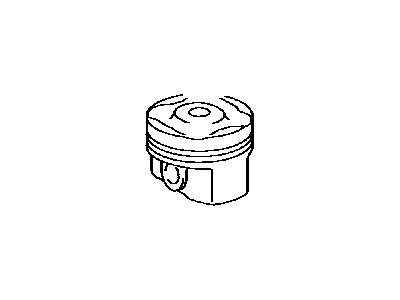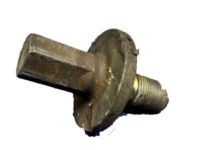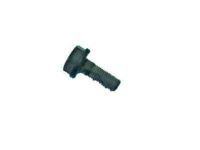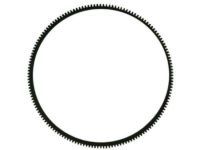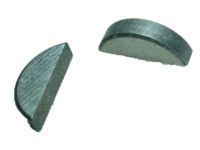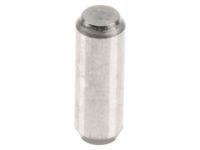Before installing the piston and connecting rod assemblies, ensure the cylinder walls are clean, the top edge of each cylinder is chamfered, and the crankshaft is in place. Remove the cap from the number one connecting rod, take out the original bearing inserts, and wipe the bearing surfaces with a clean, lint-free cloth. Clean the back side of the new upper bearing insert and lay it in place in the connecting rod, ensuring the tab fits into the recess without hammering or nicking the bearing face. Repeat this for the other bearing insert in the rod cap, keeping all mating surfaces clean and oil-free. Position the piston ring gaps appropriately, slip a section of hose over each connecting rod cap bolt, lubricate the piston and rings with clean engine oil, and attach a piston ring compressor, leaving the skirt protruding about 1/4-inch. Rotate the crankshaft until the number one connecting rod journal is at bottom dead center and apply engine oil to the cylinder walls. With the mark on the piston facing the front of the engine, gently insert the piston/connecting rod assembly into the cylinder bore, ensuring the ring compressor contacts the block. Tap the top edge of the ring compressor and gently drive the piston into the cylinder while guiding the connecting rod onto the crankshaft journal, avoiding any force that could break a ring or piston. After installation, check the connecting rod bearing oil clearance before permanently bolting the rod cap in place by laying a piece of Plastigage on the connecting rod journal. Clean the rod cap bearing face, remove the protective hoses, and install the rod cap, ensuring the mating marks align. Tighten the nuts to the specified torque in three steps, using a thin wall socket to avoid erroneous readings. Remove the nuts and detach the rod cap carefully to avoid disturbing the Plastigage, then compare the width of the crushed Plastigage to the scale to obtain the oil clearance, ensuring it meets specifications. If the clearance is incorrect, check for dirt or oil between the bearing inserts and the connecting rod or cap, and recheck the journal diameter. Carefully scrape off any Plastigage material, ensuring not to scratch the bearing, and apply a uniform layer of clean moly-base grease or engine assembly lube to the bearing faces. Slide the connecting rod back into place, remove the protective hoses, install the rod cap, and tighten the nuts to the specified torque in three steps. Repeat this procedure for the remaining pistons and connecting rods, keeping the bearing inserts and connecting rods clean, ensuring the correct piston/rod assembly for each cylinder, and lubricating the cylinder walls and bearing faces as needed. After all assemblies are installed, rotate the crankshaft by hand to check for binding and measure the connecting rod endplay, comparing it to specifications to ensure correctness. If new rods or a crankshaft were installed, inadequate endplay may require resizing at an automotive machine shop.
Posted by ToyotaPartsDeal Specialist 

